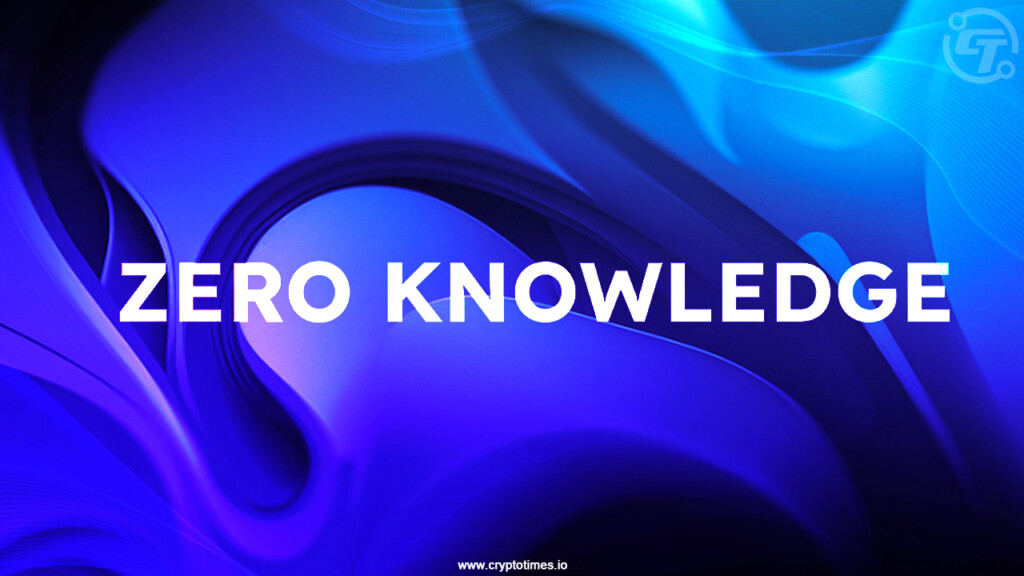







































How Zero-Knowledge Proofs (ZKP) Can Save Web3 from Further Fragmentation
 ETH
ETH
 ORBIT
ORBIT
 WHEN
WHEN
 MATIC
MATIC
 PROM
PROM

In the past decade, the blockchain ecosystem has grown exponentially, its utilities traversing through different sectors beyond DeFi, even as numerous chains and protocols have also emerged to serve the ecosystem’s rapidly evolving landscape.
However, this rapid expansion has led to a fragmented landscape where different blockchains have to operate in silos.
Fragmented Landscape
The lack of collaboration and isolated operations has led to an imminent need for robust and seamless multi-chain compatibility within the blockchain ecosystem. To address this issue, crypto bridges- tools that enable users to port their assets from one network to another-were introduced but they also fell short in terms of security and efficiency.
Lapses with Crypto Bridges
In recent years, crypto bridges have become prime targets for malicious actors, resulting in some of the most devastating hacks in crypto history.
For instance, back in March 2022, the ‘Ronin Bridge Hack’ involved attackers stealing approximately $624 million worth of crypto assets from its associated network. Just a few months later, hackers made off with about $100 million in various cryptocurrencies from Harmony’s Horizon Bridge. Similarly, as part of the chaotic Nomad Bridge Hack,, attackers drained nearly $190 million from the protocol.
More recently, Bitcoin bridge XLink was forced to temporarily shut down its operations after suffering a $10 million hack that targeted its Ethereum and BNB Smart Chain endpoints. Similarly, in January, crypto bridge aggregator Bungee saw $3.3 million being drained from over 200 wallets. However, most notably, Orbit Chain, a multi-blockchain communication platform, lost $81 million earlier this year when hackers exploited its cross-chain bridge, stealing substantial amounts of Ethereum and DAI stablecoin — thus highlighting the urgent need for more secure and robust interoperability solutions.
Enter Zero-Knowledge (ZK) proofs
In their most basic sense, zero-knowledge proofs (ZKP) can be described as cryptographic tools allowing one party to prove to another that a statement is true without revealing any additional information. In the context of blockchain interoperability, ZK proofs can be used to verify the validity of transactions across different chains without exposing sensitive data or compromising their security.
Since 2021, the technology has garnered immense traction, being integrated into various aspects of the burgeoning Web3 ecosystem. For instance, Zk Rollups have already been adopted by several Layer 2 scaling solutions to increase their transaction throughput while maintaining the security guarantees of the underlying blockchain. Similarly, ZK-based bridges have also entered the mainstream fray, offering users more secure and efficient cross-chain transfers.
Prom Platform: Spearheading the revolution
One platform at the forefront of this revolution is Prom, a modular ZkEVM Layer 2 solution that enables interoperability across various chains, including both EVM and non-EVM compatible networks. Prom’s unique approach involves submitting proofs of transactions to multiple chains, effectively building bridges between ecosystems.
By leveraging Zero-Knowledge Succinct Non-Interactive Arguments of Knowledge (zkSNARKs), Prom significantly reduces transaction costs while maintaining a high level of security — making it an economical solution for users and developers alike. Furthermore, Prom’s utilization of Polygon Zero’s cutting-edge recursive STARK technology enables rapid transactions and scalable dApp development.
What sets Prom apart is its commitment to strengthening the integrity and resilience of the entire network. By submitting proofs to multiple chains, Prom creates a more secure and reliable platform for users. This approach not only enhances the security of cross-chain operations but also contributes to the overall stability of the Web3 ecosystem.
Prom’s EVM-equivalent design allows for seamless integration with existing Ethereum infrastructure, minimizing development overheads. This compatibility, combined with the efficiency of ZK proofs, ensures that Prom offers secure and immutable transactions while bridging seemingly disparate blockchain ecosystems.
Conclusion
As the crypto ecosystem continues to evolve, bridges/platforms offering robust multichain compatibility stand to increasingly gain mainstream traction. The importance of this trend is underscored by several market projections, with a recent study suggesting that the blockchain interoperability market is expected to reach a valuation of $6 billion by the end of 2036.

